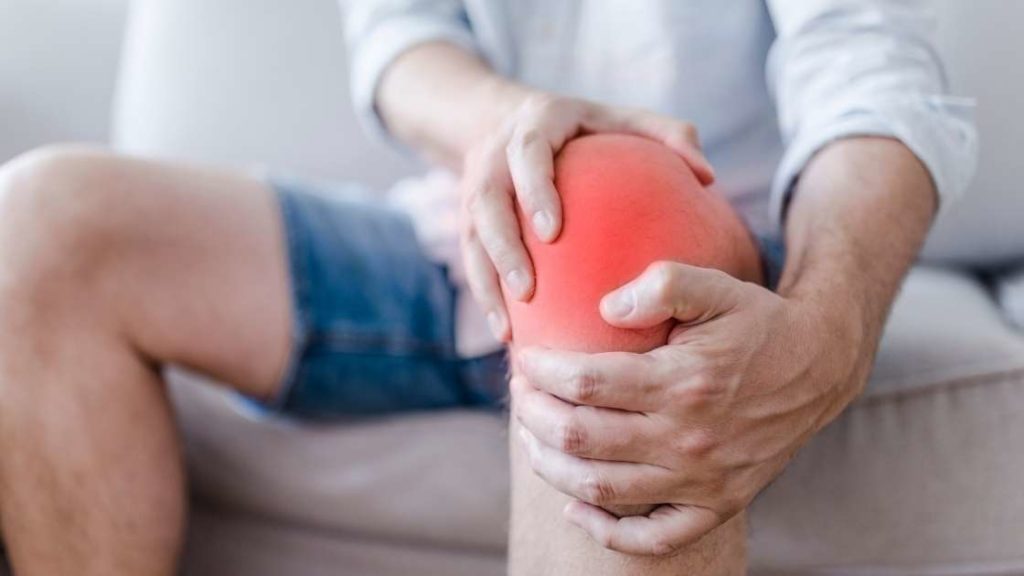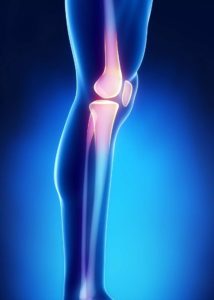What is Patellofemoral Pain Syndrome?

Patellofemoral Pain Syndrome, also called Chondromalacia Patella, is a very common condition caused by overuse of the knee. In fact, it’s probably the most common knee overuse condition there is. It usually presents itself with anterior knee pain and is most often found in adolescents and young adults who participate in sports, with a higher prevalence among women.
How Does Patellofemoral Pain Syndrome Happen?
A shorter way to phrase that would be “what causes patellofemoral pain syndrome?”. However, I’ve already told you what causes it: overuse. Now how exactly does that overuse lead to the condition? Let’s get into the anatomy of it!
You have this thigh bone called the femur; a shin bone called the tibia (with a long skinny fibula bone right behind it); and a kneecap, also called the patella, just in front of where the femur and tibia meet. The femur, tibia, and patella are all involved in this patellofemoral pain syndrome.
But how?
An unbalanced kneecap is to blame. Overdoing the flexion and extension of the knee can lead to the patella shifting off-center. If the kneecap doesn’t rest properly between the grooves of the femur and tibia, knee overuse will eventually lead to injury. A person with an unbalanced kneecap will bear more weight on one side of the leg, leading to inflammation in the overworked side of the femur and patella. Once the knee is off-balance, seemingly mundane activities can worsen the pain. Running, walking, squatting, and even sitting with a bent knee for long periods of time can trigger it.
Yep. It’s an injury that can worsen on your commute to work. Or trying to relax in a cushy chair that doesn’t come with a leg rest. Anything that involves a bent knee, no matter how sedentary, can make it worse.
How is Patellofemoral Syndrome Treated?
When exploring options, you’ll want to get on top of the treatment as soon as possible. Waiting too long can lead to further complications, and thus require more invasive forms of treatment.
Orthotics
These will balance out the alignment of the foot. People with flat feet can especially benefit from orthotics, as arch support is crucial to pushing the bones to the center.
Physical Therapy
The quadriceps are the four muscles that control the patella’s mobility. This muscle group will need to be strengthened to increase flexibility. This can be done through rehabilitative exercises, which will push the patella toward the center and back into the groove.
Home Exercises
A physical therapist, chiropractor, or massage therapist may recommend exercises that are safe to do on your own.
Ice Therapy
An ice pack is an inflamed muscle’s best friend. Applying ice to the knee for 15 minutes at a time, four times a day is one of the easiest ways to treat the pain.
Rest
Remember: rest with the knees extended. Either pop up the leg rest, pull out the ottoman, or lay flat on a comfortable surface.
Surgery
This should be a last resort. If left untreated for too long, patellofemoral syndrome may require surgery. Articular cartilage can eventually breakdown if excessive weight continues to push on an unbalanced knee. Arthritis can develop, wearing away the smoothness of the patella, and an arthroscopy may be used to smooth out a severely damaged kneecap.
Surgery for patellofemoral syndrome is very uncommon, however.
Now You Know!
The takeaway from this article should be this: never ignore anterior knee pain that lasts more than 24 hours. With intervention, it should resolve itself in a matter of weeks though it may take months.
Stay happy, healthy, and take good care of your knees!

Katrina Jenkins
Author, Licensed Massage Therapist
Katrina Jenkins graduated from Towson University in 2013 with a Bachelor’s Degree in Health Science and worked as a nurse’s aide briefly before pursuing her true passion. She graduated from the Massage Therapy Institute of Colorado in April 2016 with honors and completed the Touch of Healers Scholarship Program the following summer. She has been a part of the Moyer Total Wellness Team since the summer of 2017.
Resources
Mulcahey, MD, FAAOS, Mary K., et al. “Patellofemoral Pain Syndrome – OrthoInfo – AAOS.” Aaos.org, 2010, orthoinfo.aaos.org/en/diseases–conditions/patellofemoral-pain-syndrome/.
Nall, Rachel. “Patellofemoral Syndrome.” Healthline, Healthline Media, 7 Aug. 2017, www.healthline.com/health/patellofemoral-syndrome.
The Mayo Clinic Staff. “Patellofemoral Pain Syndrome – Symptoms and Causes.” Mayo Clinic, 2018, www.mayoclinic.org/diseases-conditions/patellofemoral-pain-syndrome/symptoms-causes/syc-20350792.
Photo Credit
Canva by dragana991
Canva by janulla

